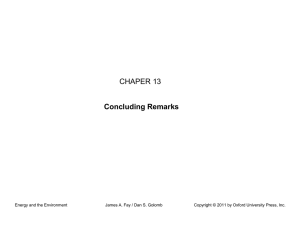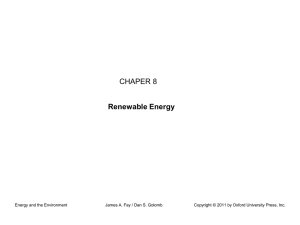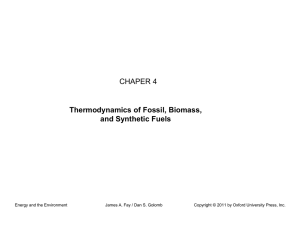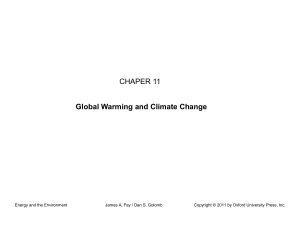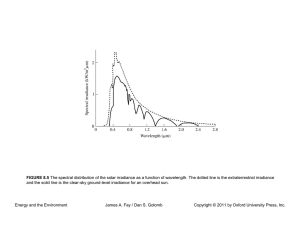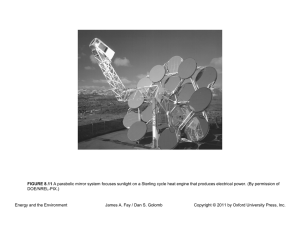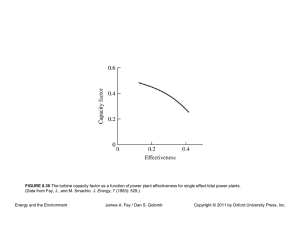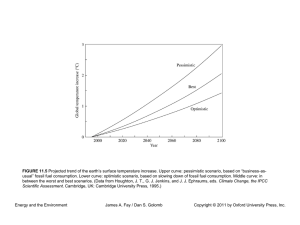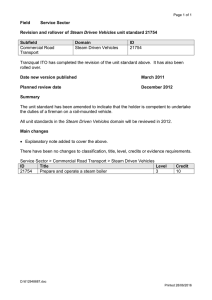CHAPER 3 Thermodynamic Principles of Energy Conversion
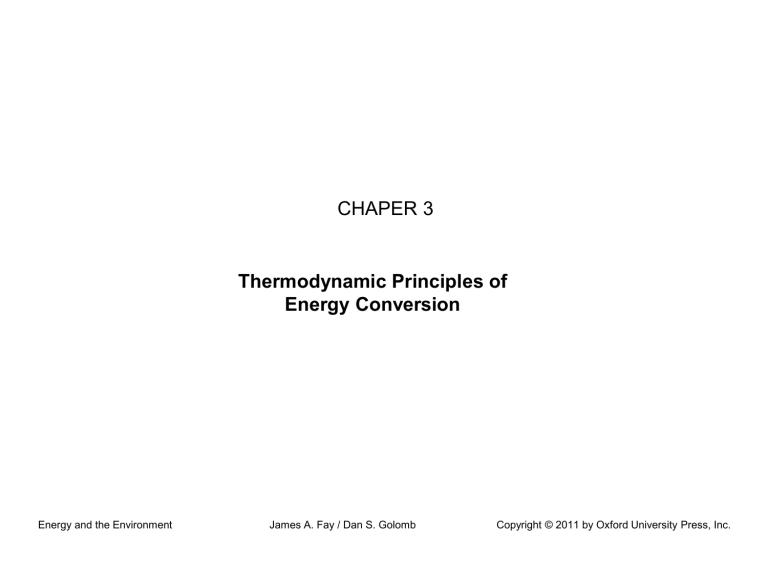
CHAPER 3
Thermodynamic Principles of
Energy Conversion
Energy and the Environment James A. Fay / Dan S. Golomb Copyright © 2011 by Oxford University Press, Inc.
FIGURE 3.1
The Carnot cycle consists of isothermal and isentropic expansions (1 cylinder while absorbing heat q h from a hot reservoir (1
2 ), rejecting heat q c
2, 2
3 ) and compressions (3
to a cold reservoir (3
4, 4
4 ),and producing work
1 )of a fluid in a w .
Energy and the Environment James A. Fay / Dan S. Golomb Copyright © 2011 by Oxford University Press, Inc.
FIGURE 3.2
The Rankine cycle is a steady flow cycle where water is turned to steam at high pressure in a boiler (2 passes through a turbine to generate mechanical power (5 into the boiler (1
2). (In the T , s
6), after which the steam is condensed to water (6
5) and then
1) and pumped back diagram on the left, the area underneath the dashed line delineates the conditions where both steam and liquid water coexist, in contrast to steam only to the right and liquid water to the left.)
Energy and the Environment James A. Fay / Dan S. Golomb Copyright © 2011 by Oxford University Press, Inc.
FIGURE 3.3
A multimegawatt steam turbine rotor, showing the rotor stages. From left to right, the high-pressure, intermediate-pressure, and low-pressure stages. (Copyright Norbert Millauer/Getty Images.)
Energy and the Environment James A. Fay / Dan S. Golomb Copyright © 2011 by Oxford University Press, Inc.
